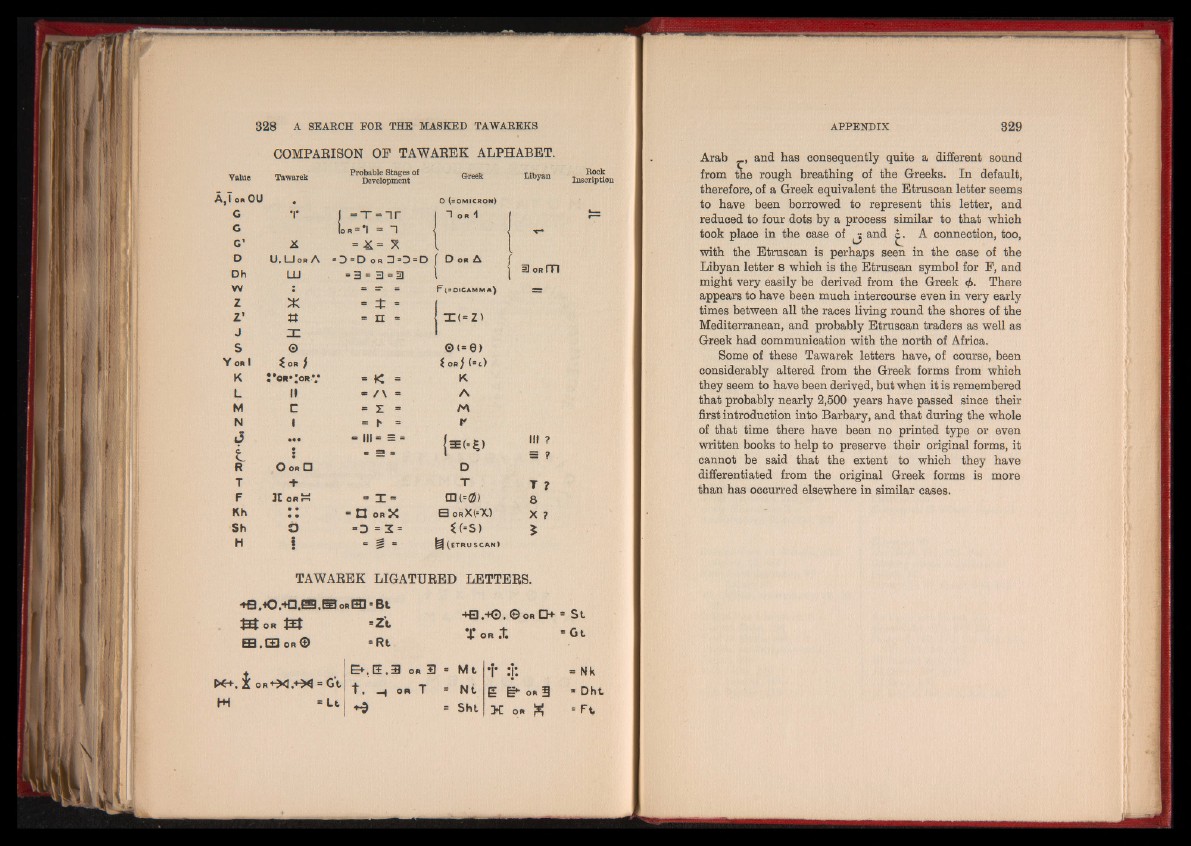
j ' ''if il' II!' Ì
Development Greek Libyan Rock
Vaine Tawarek Probable Stages of
Inscription
,1 OR OU • O (=OMICRON)
G • r I = T = i r I ”! OR 1 f t
G )oR = *l = 1
G’ X = * = X I
D
U.Uor A
Dh
LU
0 = D O R H O = D
= 3 = 3 = U
| D o n A
E
<ote
Ini
W •• = — = P(ZOICAMMA)
Z X = £ =
r n = n =
M II
H
j ZE
s ©
a>
u
0
Y orI
ao
w
i or/ (=l)
K Ì " or*;orV = K = K
L i i = / \ = A
M c = z = rA
N 1 = = ?
J
LR
•••
•••
O OR O
•= hi = = =
D
III ?
= ?
T + T T ?
F H ORn - i = m(=0) 8
Kh •• •• - a o r X B orX (0 0 X ?
Sh Ò * 0 = 2 = i (*S) S
H •i• |§| ( E T R U S C A N )
l i I TAWABEE LIGATUBED LETTEBS.
“♦S .-»O.-CI.S ,f3 or S3 * Bt
£E£ or J±l =Zt
EB.EE1 o r © - Rt
+S.+0. © or D+ = St
T O R it * G t
E*\E,3 or 3 = Mt
1”, or T = Nt
■*“3 = Sht
T :j:
g §=► OR 1
K OR £
» Nk
* Dht
'Ft,
APPENDIX 329
Arab and has consequently quite a different sound
from the rough breathing of the Greeks. In default,
therefore, of a Greek equivalent the Etruscan letter seems
to have been borrowed to represent this letter, and
reduced to four dots by a process similar to that which
took place in the case of jj and A connection, too,
with the Etruscan is perhaps seen in the case of the
Libyan letter 8 which is the Etruscan symbol for P, and
might very easily be derived from the Greek <f>. There
appears to have been much intercourse even in very early
times between all the races living round the shores of the
Mediterranean, and probably Etruscan traders as well as
Greek had communication with the north of Africa.
Some of these Tawarek letters have, of course, been
considerably altered from the Greek forms from which
they seem to have been derived, but when it is remembered
that probably nearly 2,500 years have passed since their
first introduction into Barbary, and that during the whole
of that time there have been no printed type or even
written books to help to preserve their original forms, it
cannot be said that the extent to which they have
differentiated from the original Greek forms is more
than has occurred elsewhere in similar cases.